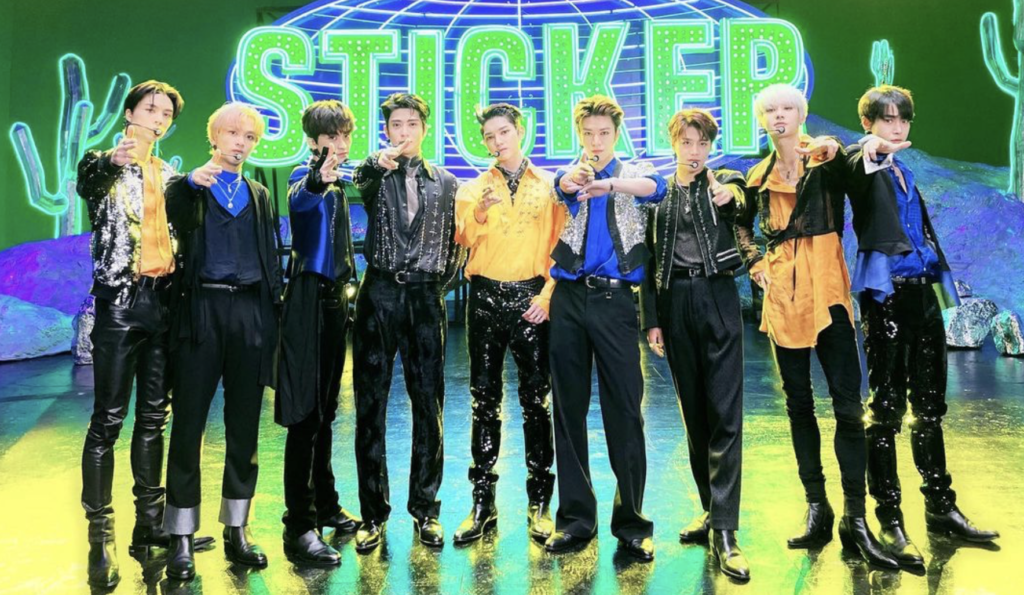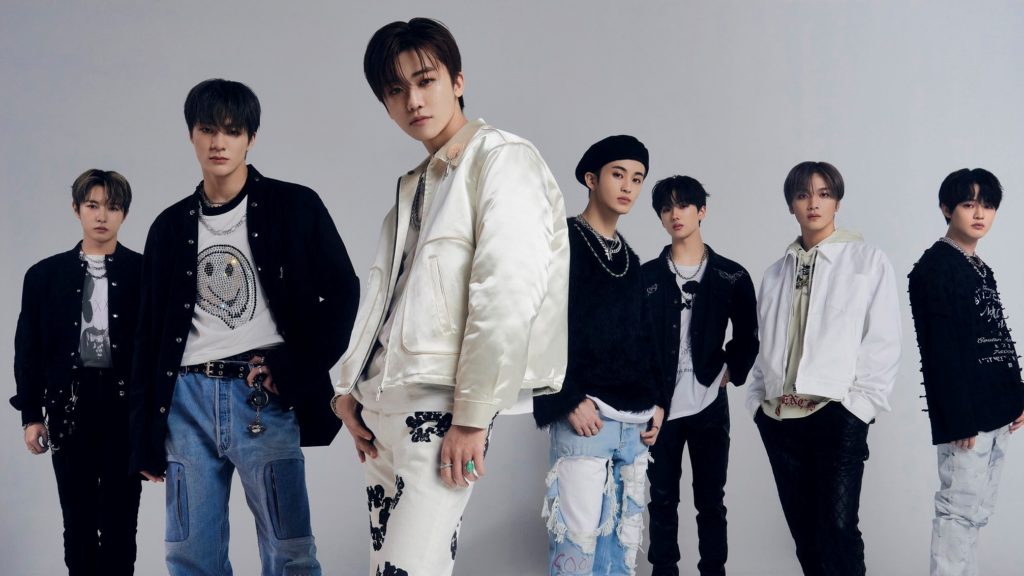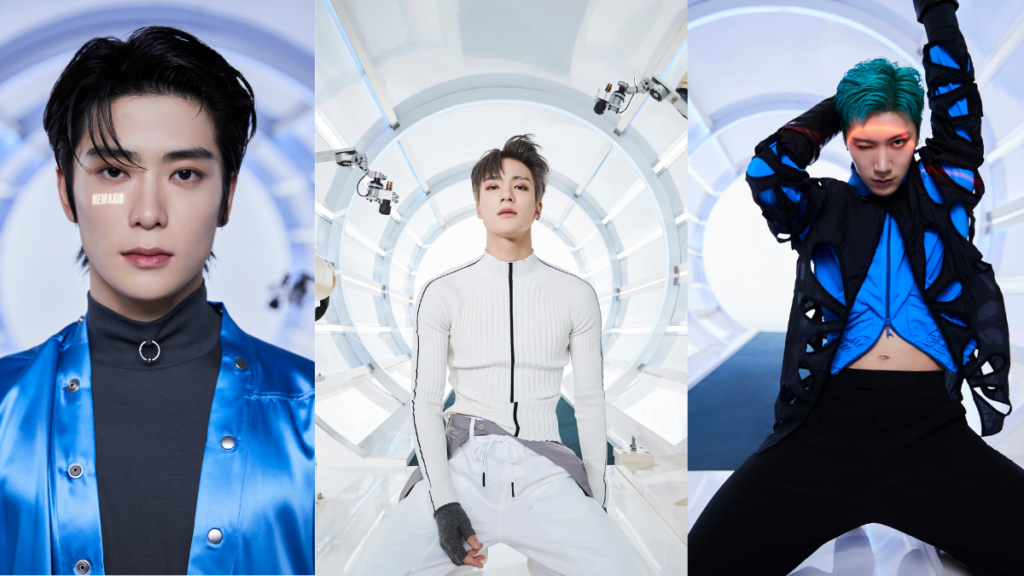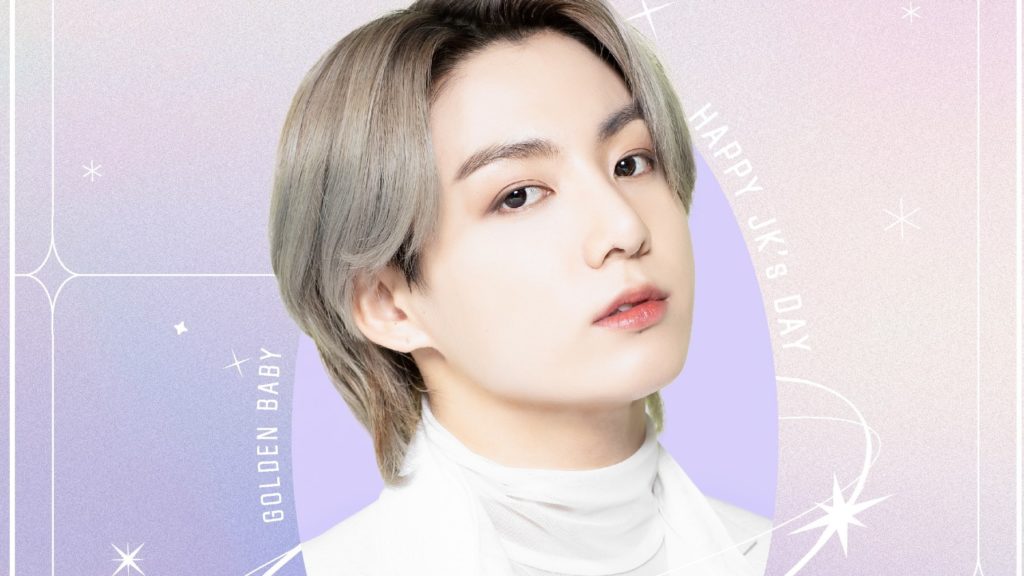Since the start of Lee Soo Man’s creation SM Culture Universe (SMCU), and the official start of the new universe with æspa’s debut, fans of existing SM Entertainment groups have been wondering how these groups, with a wealth of existing conceptual content, will be included. The answer is simple–by expanding on the lore and ideas presented by the artists. NCT 127 is no exception.
Since the teasers for Sticker came out, many fans have been eager to piece together the puzzle and place NCT 127’s in the SMCU. The transition into the SMCU’s lore is seamless, with hints sprinkled as far back as NCT 2020, and expanded upon with Sticker.
What is Neo Culture Technology?
Before we dive into the revamped NCT 127 universe, it is essential to understand the existing lore. What exactly is NCT? What does their concept deal with?
NCT is SM Entertainment’s latest boy group, formed in 2016, with no cap on members. The first unit was NCT U, which teased members from various countries. NCT started in Seoul (get it? 127 are the coordinates of Seoul) and expands to the world. Hence their old introduction: “to the world, this is NCT.” Another key player in this was NCT DREAM, initially the rotational unit full of teenagers, intended to prepare them before they ventured off into other NCT projects and units. So there was already a duality there, from youth to unit. From Seoul to the world. From dream to career. There is also a sense of change relative to time. Evolution, and physics, if you think about time as a variable.
Apart from their diversity and limitless expansion worldwide, NCT is known for their controversial music and nonconformity—the neo sound. They are disruptors in the world. These ideas manifest in NCT’s mythology.
The Distinction Between Dream and Reality
In “SM_NCT 1. the origin,” dreams were introduced through a child stranded in a desert. He connected to NCT through his dreams. Both Taeyong and Winwin interacted with the child through the synchronization of dreams: the seventh sense. And yes, this dichotomy between dreams and reality is more profound than NCT U asking us to “open our eyes,” and stop sleeping on them, in their debut single, “The 7th Sense.”
This juxtaposition is expanded upon in “NCTmentary.” Based on the videos, there are two primary states of being: consciousness and unconsciousness. Wake and dream. In reality, some confines are not experienced in dreams.
This is where “DREAM LAB” comes into play. NCT is part of this experiment. There are five main phases of the “DREAM LAB”: reality, dream, the synchronization of dreams, dream in a dream, and back to reality. The goal was “to break the limits of reality and to bring the dreams into reality” for all persons involved. The more the individuals connected or held empathy for one another, the more their dreams became a reality.
As Mark said in the “Touch” behind the scenes video, “you just gotta touch, you know? We’re touching each other. It’s all about interaction.”
Now Make it NCT 127
From NCT 127’s debut with “Firetruck,” it is clear that they are disruptive— nonconforming to societal expectations. Throughout the song, they were hosing down a monotonous life and creating a more lively atmosphere. At the end of the video, an old lady was asleep when NCT 127 appeared on the scene, ready to put out small fires. While this likely doesn’t intersect with the greater plotline, “Firetruck” introduced NCT 127 as people who emerge prepared to disturb the happenings in one’s unconsciousness.
The consciousness juxtaposition returned in the Regular-Irregular album teasers. In the “Regular Dream” NCT 127 were office workers who worked so tirelessly they fell asleep in the office. The office was reinterpreted in “Irregular Office,” where they partied hard and brought nonsensical items to the office filled with money.
The night-and-day contrast returns in Sticker promotions. During the daytime, their Instagram showed them as regular hardworking students, and at night, they were hackers. The “NCT 127: Who is STICKER?” video confirms their duality.
However, this does not mean every song they have released ties in with this greater universe. Examples of songs not included are “Cherry Bomb” and “Let’s Shut Up & Dance”— sorry, Jason Derulo, you’re not part of SM’s Culture Universe.
The Dual-World Concept in SM Culture Universe
Based on content introduced in NCT 2020, there is more to add to the land of unconsciousness. In the “NCT 2020: The Past & Future” teaser, NCT says, “beyond the infinite universe, we call this wave ‘KWANGYA’ created by filtration from the sea of unconscious.” In summary, the dreams take NCT to Kwangya.
They go on to say, “’ether’ is also a limitless medium and can connect dimension and dimension.” This suggests that unconsciousness takes people to a whole new world— a physical place where they need to be connected by some sort of ether. This implies that they need to be plugged into the world with an “ethernet” cable. Or, at the very least, need to be transported by some third-party device.
In NCT 127’s pre-promotional content, more on the dual world concept appears. In the NCIT House spoof, Haechan, Jungwoo, and Taeil are writing about the connections between worlds. The sitcom introduces it comically, but more references occur in the skit by Yuta, who claims to gather energy from KOSMO for his future readings. While KOSMO is not Kwangya, this confirms that there are multiple worlds in the NCT 127 universe.
This dual world existence is not new to SM artists. For example, EXO was the first group to have a storyline and lore in SM Entertainment. They are superheroes from EXO Planet, who constantly save the universe. More recently, æspa travel between worlds in their plot, and travel to Kwangya to fight the Black Mamba. They want to restore the SYNK and reunite with their digital counterparts.
Neo Got My Back
It is no secret that NCT references the Matrix films. After all, they have a track called “Neo Got My Back,” and the main character of the Matrix is named Neo. Neo is good with technology— a hacker. Neo Culture Technology. It speaks for itself.
The NCT 127 universe references the Matrix, which can shed light on what is going on. In a nutshell, the Matrix films focus on Neo, who learned that he is living in a simulation early on. So he spends all movies disrupting the simulation for the good of humanity.
This suggests that NCT 127’s Matrix-esque tale began with their “Regular” era in the monotonous office— in a similar way, the Matrix starts with Neo’s office job and yearns for excitement. Not only is the office environment the same, but NCT 127 drifted away, and the difference between consciousness and unconsciousness became muddled. Oh, and NCT 127 also had their cityscape in the “Regular” video that was iterated in new ways in “Kick It” and “Sticker.”
From “Regular” to “Sticker”
Let’s go in chronological order based on the release to attempt to make sense of the plot. NCT 127 became aware of the weird dream and reality difference in “Regular.” They rejected the standards in “Simon Says.” The Neos learned about their potential and abilities in “Superhuman.” Their training began in “Kick It,” which has a dojo-themed environment similar to Matrix’sin a similar way Matrix has a training montage in a dojo. This training ended with “Punch.” And they geared up to fight back in “Sticker” with the chosen one dubbed “Sticker” who is also a hacker.
Connections are loosely drawn from the videos–however, many questions remain. For example, is NCT 127 simulation the Kwangya, or is that their reality? Is the city they depart to the Kwangya? Where are their bodies? Who is running the simulation? Do the multiple iterations of the city imply they have failed before? Is it being modified for them?
In “SMCU the Origin,” the narrator says, “in the beginning there was Kwangya,” which appears to imply this is reality. Yet, in NCT’s lore, NCT stated they only enter Kwangya through unconsciousness. Another possibility is that the Kwangya serves as the simulation, which was created to contain humankind. There is so much to learn, but the comparisons to the Matrix help create a structure for the NCT 127 storyline.
More wise words of Mark, “I feel like the possibility of all those possibilities being possible is just another possibility that can possibly happen.”
So, Who is STICKER?
Now to revisit the critical question: Who is STICKER?
Perhaps “Sticker” is the NCT 127 universe’s version of Neo. This person’s, or people’s, goal is to break the simulation or leave the dreamland for good. Perhaps even help NCT 127 escape from Kwangya and return to consciousness. It can be one member or all of them.
What’s certain is NCT 127 saddled up with the lasso of truth— a reference to Wonder Woman’s lasso and symbol for their knowledge and righteousness. In their cowboy outfits, they geared for battle in their latest video for “Sticker.” This seems to be just the start of their story.
What Does This Mean for NCT 127 in the Future?
Fortunately, this plot means that NCT 127 has more to share with fans. While we don’t know exactly how much is left of the story, we are sure NCT 127’s plot is not yet at its climax.
Additionally, NCT 127’s connection with different artists through the culture universe hints at one thing: collaborations. Of course, fans have already experienced such things through SM STATION, and other singles released throughout the years. Yet, this new universe seeks to connect the lore for each artist. The creation of SuperM, SM Entertainment’s supergroup consisting of seven of their strongest performers across various groups, has demonstrated this.
Sungchan, one of NCT’s newest additions, and æspa’s Winter featured in Kangta’s “Free to Fly” music video. Introduced in SM’s Congress, this video took both artists to the Kwangya as Kangta summons them.
While there are no public announcements, it is safe to say the possibility of this is open. After all, the “SMCU the Origin” narrator said, “Since long ago, through dreams and subconsciousness, we have been sending messages about our solidarity.”
For more on NCT 127’s concept, check out our piece on the NCIT here.
Thumbnail courtesy of SM Entertainment.




